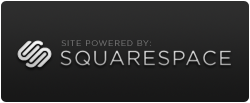How to improve your Facebook Wall post performance by up to 300%: The EDGE? Rules
If you manage a brand’s Facebook presence, you likely ask yourself “How can I improve my Wall posts?” In response to this question, Buddy Media recently conducted a study to determine a set of Wall post best practices. Based on their findings, I created 5 simple rules to ensure my Brand Page publishing follows Buddy Media’s Strategies for Effective Facebook Wall Posts:
- EIGHTY CHARACTERS. Keep your posts under 80 characters in length.
- DESCRIPTIVE URL. Use your brand’s full-length URLs when possible, use a brand-specific short URL (e.g. http://pep.si/ocLU) when the 80 character limit is an issue.
- GOOD TIMING. Publish your posts a.) outside of normal business hours and b.) on the days best suited for your brand’s industry.
- EFFECTIVE KEYWORDS. Request actions with LIKE, TAKE, SUBMIT, POST, COMMENT, and TELL US. Describe promotions with EVENT, WINNER, OFFER, NEW, and WIN.
- ? Ask questions at the end of your post using the interrogatives WHERE, WHEN, WOULD, or SHOULD.
Notice the first character of each rule spells the phrase “EDGE?”? Makes them easy to put into practice. When you’re writing a post, ask yourself “Does this Wall Post have the EDGE?”
That’s it — just follow the EDGE? rules and your Wall posts conform with proven best practices that have been shown to yield consistently higher-than-average fan engagement rates.
Want to know more?
The EDGE?, EdgeRank, and Best Practices
The 5 EDGE? rules are based on Buddy Media’s “Strategies for Effective Facebook Wall Posts: A Statistical Review.” The report outlines best practices for publishing Wall posts aimed at showing up in the Facebook News Feed, based on data collected in early 2011.
According to the report,
- Posts with 80 characters or less had, on average, a 27% higher engagement rate than those with more than 80 characters.
- Full-length URLs in posts had three times higher engagement rates than ones using a URL-shortener. This is “likely because the ‘indicators’ a user normally gets from reading the text in a full-length URL are missing with a shortened URL.” If full-length URLs are a too long for the 80 character limit, the report suggests using a condensed URL that still includes some brand identification in the Web address (e.g., the use of http://pep.si/ocLU for http://www.pepsi.com).
- Posts published outside of business hours (10 am - 4 pm EST) had 20% higher engagement rates.
- In general, engagement rates are 18% higher on Thursday and Friday, which fits nicely with recent Facebook data showing the social network’s “Happiness Index” spikes by 10% on Fridays.
- “Engagement rates ultimately vary by industry.” For example, engagement rates were significantly below average on Fridays for retail industry posts so “take into consideration your industry when determining your posting schedule.” Daily engagement rates are broken by industry in the full report.
- Direct, outright requests were most effective in driving ‘Likes.’ Accordint to the report, “The top two keywords, ‘lilke’ and ‘post,’ both have positive comment and ‘Like’ rates — suggesting a basic fundamental rule to keep it simple.”
- When running a promotion such as a contest or sweepstakes, “soft sell” words like “event” and “winner” yielded much higher engagement rates than words more direct words like “contest” or “sweepstakes.”
- Posts the end with a question experienced 15% higher engagement rates.
- When asking questions, the interrogatives “where,” “when,” “would,” and “should” drove the highest engagement rates.
If you’re a social media marketer, you likely noticed key success metrics align positively with Facebook’s EdgeRank, the algorithm which determines if your posts show up in a users News Feed. Buddy Media’s Allie Rolnik sums it up pretty well: “Overall, EdgeRank is based on three factors: affinity, weight and relevancy. When multiplied together, they have the ability to push your content to the New Feed’s ‘Top News,’ where fans will be able to see what your brand has to say.” Higher engagement rates lead to higher EdgeRank-ing which leads to better placement in the News Feed, which leads to higher engagement rates. It’s a virtuous cycle.
KISS the EDGE?
That’s a lot of stuff for a body to digest and remember, let alone utilize when creating content for a brand’s Facebook post schedule. To make it easy on myself, I condensed Buddy Media’s suggestions into 5 simple, actionable rules. To make it catchy, I turned them into the EDGE? mnemonic.
Just remember:
- EIGHTY CHARACTERS. Keep your posts under 80 characters
- DESCRIPTIVE URL. Use your brand’s full-length URLs when possible, use a brand-specific short URL (e.g. http://pep.si/ocLU) when the 80 character limit is an issue.
- GOOD TIMING. Publish your posts a.) when your audience is likely checking Facebook and b.) on the days best suited for your brand’s industry.
- EFFECTIVE KEYWORDS. Request actions with LIKE, TAKE, SUBMIT, POST, COMMENT, and TELL US. Describe promotions with EVENT, WINNER, OFFER, NEW, and WIN.
- ? Ask questions at the end of your post using the interrogatives WHERE, WHEN, WOULD, or SHOULD.
If you liked the article, please click ‘Like’ below! And I’d love to hear your comments - would you be able to make use of the EDGE? in your brand’s posts?


 How To
How To
Reader Comments